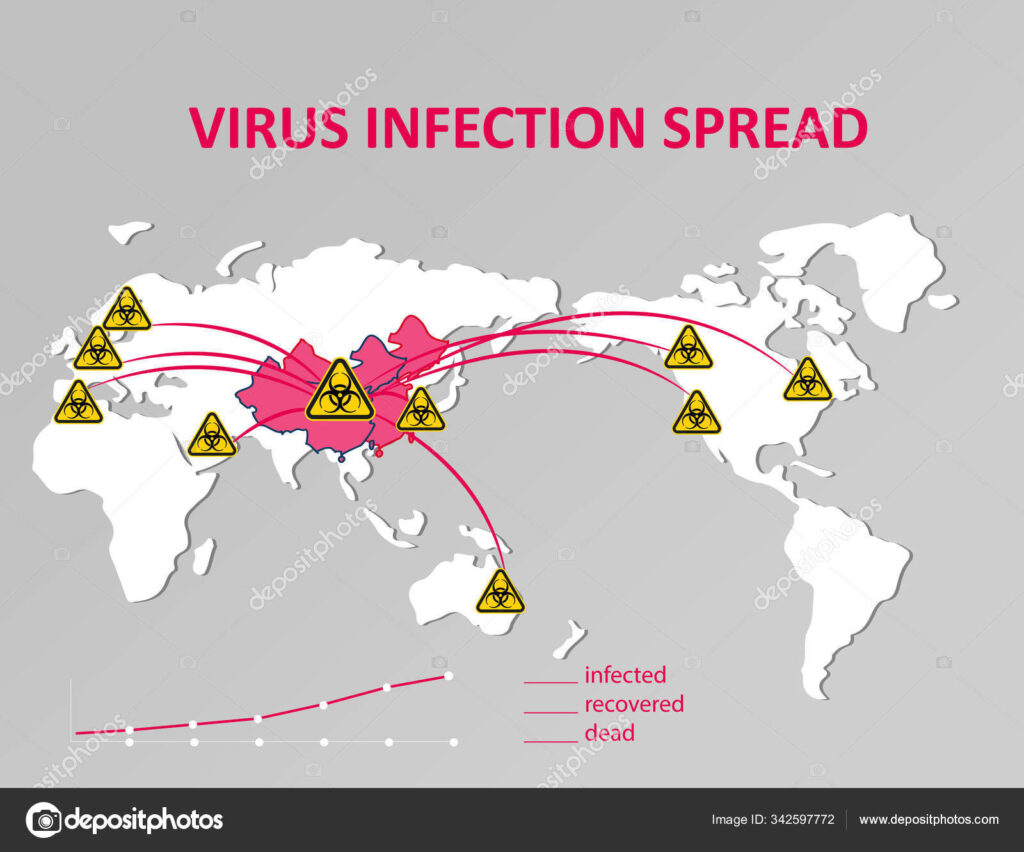UMass Amherst-UT Austin Team Awarded $27.5 Million by CDC to Help Establish Nation’s First Disease Outbreak Response Network

Photo: Deposit Photos. Public domain
Source: UMass News & Media
$250 Million Program Will Support Decision Makers During Public Health Emergencies Like COVID-19
A team from the University of Massachusetts Amherst and The University of Texas at Austin is among 13 institutional partners chosen by the CDC’s Center for Forecasting and Outbreak Analytics (CFA) to establish the nation’s first outbreak response and disease modeling network.
The CDC on Tuesday, September 19, announced the $250 million effort that grew out of the needs and lessons of the COVID-19 pandemic. The emerging national network will use data to support decision makers during public health emergencies.
Led by renowned infectious-disease researchers, integrative biologist Lauren Ancel Meyers, director of the Center for Pandemic Decision Science, and biostatistician Nicholas Reich, director of the UMass COVID-19 Forecast Hub, the UMass-UT team was awarded $27.5 million from the CFA to help implement forecasting and disease-modeling efforts over the next five years.
In addition to the “implementation” category under which the UMass-UT team applied for and was funded as one of three centers in the nation, the other categories for funding are innovation and integration. “Implementation is where the rubber meets the road,” says Reich, who is also director of the CDC-designated Influenza Forecasting Center of Excellence and professor in the School of Public Health and Health Sciences. “We want to take what worked from the collaborations between public health officials and the modeling community during COVID and improve upon it.”
Meyers was an integral player in the local analysis of and response to COVID-19 in the Austin area, where she directed the UT Austin COVID-19 Modeling Consortium. She was given a key to the city earlier this year for her lab’s round-the-clock contribution to the community during the pandemic.
“Our models have provided critical information and saved lives during COVID-19 and other public health emergencies,” says Meyers, a professor of integrative biology, statistics and data sciences, and population health at UT Austin. “However, with each new threat, we scrambled to build predictive analytics and to communicate the results to decision makers. This project represents a huge national investment in data and analytics for pandemic preparedness. It will allow us, and teams like ours, to ensure that our tools are poised to rapidly detect, forecast and combat new threats and that public health officials across the U.S. are equipped to use them.”
Reich’s forecast hub, which created a weekly “ensemble” forecast of COVID deaths and hospitalizations from dozens of models developed by teams of highly respected infectious-disease forecasters, served as the source for the CDC’s short-term forecasts for counties, states and the nation during the pandemic. These predictions were used by the White House to inform public communications as well as by healthcare and university systems in planning for coming waves, and by vaccine manufacturers in designing and siting clinical trials.
Reich says the collaboration with Meyers at UT Austin will take advantage of the strengths of both of their groups’ experiences collaborating with public health officials. The goal will be to take pilot projects that have proven successful and design them for use across jurisdictions.
“We’re looking forward to using this new partnership to take the best of what modeling and outbreak analytics have to offer and building tools and systems that can provide valuable insights to a wide range of stakeholders, from decision-makers at the local, state and federal levels to the general public,” Reich says.
Reich and Meyers will partner with two dozen academic groups and public health agencies in Texas and Massachusetts; each has received subawards under the UMass-UT plan. In Massachusetts, the Department of Public Health’s senior informatics epidemiologist Meagan Burns will work with Reich and Meyers to strengthen the team’s academic-public health core and develop strategies for decision support during crises.
“We are excited to continue our work with UMass Amherst as well as engage with UT Austin,” says Dr. Catherine M. Brown, state epidemiologist. “This collaboration will allow us to leverage the expertise of our partners and result in critical tools to respond to public health threats. DPH will help inform the development of those tools and will use them to enhance our implementation of modeling and analytics to support public health.”
Also as part of the award, the UT-UMass group will receive $500,000 a year to develop staffing and data-sharing plans when emergency activation needs to happen. “The plan is to have this network of academic and industry partners that are standing by ready to be activated when another outbreak emergency occurs, and not necessarily just the once-in-a-century pandemic,” Reich says. “Once every couple of years there’s something like an Ebola or monkey pox outbreak, or SARS or pandemic flu.”
The national network will move the U.S. forward in efforts to better prepare for and respond to disease outbreaks, says Dylan George, director of the CFA. “We are committed to working alongside these outstanding partners to achieve our goal of using data and advanced analytics to support decision-makers at every level of government,” he saID.
